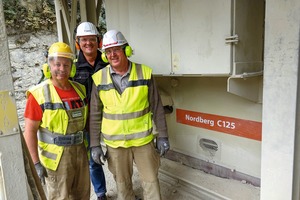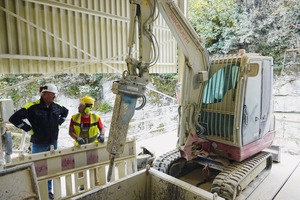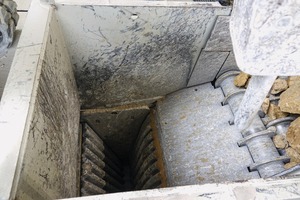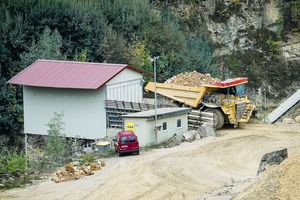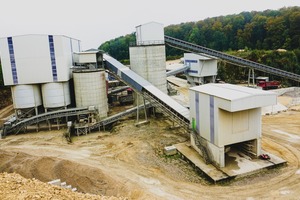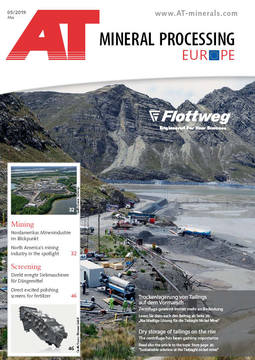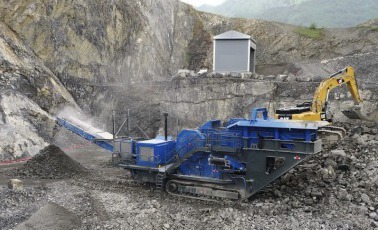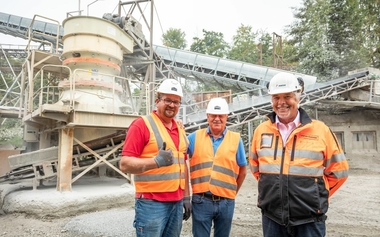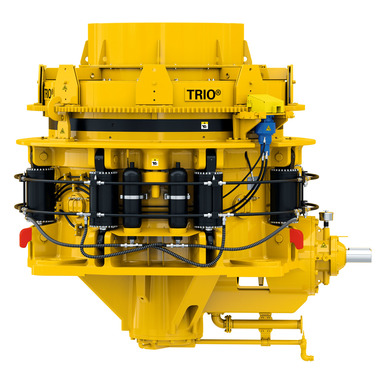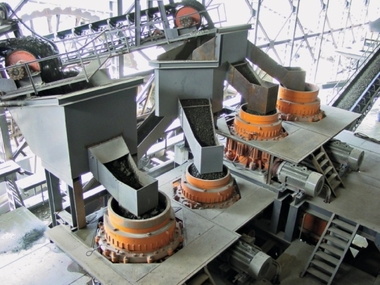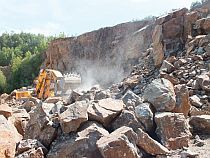New primary crusher in proven steel frame structure
The “Stuttgart 21” rail project, the Stuttgart-Ulm rapid transit route or the Bossler Tunnel are just some of the projects in which concrete aggregates are used, says operations manager Siegfried Militsch. The products are sold together with Alfred Moeck KG, a quarrying company and crushed stone supplier, through the jointly established crushed stone sales company Schottervertrieb Vordere Alb GmbH & Co. KG (short: SVA).
In time for the new year, the management of the quarry operation opted for a rebuild of the primary crusher station – this included the replacement of a stationary integrated excavator and the installation of a new monitoring cabin for primary crusher operation. The plan from the beginning was to replace the stationary excavator with a mobile hybrid excavator with hydraulic hammer to support crushing operation with improved and more flexible technology.
During the rebuilding work, it was noticed that the old jaw crusher also showed cracks near the infeed opening for the coarse limestone rock, which did not initially surprise Siegfried Militsch and his colleague Uwe Laderer – already millions of tonnes of rock had passed through the opening over decades. After closer inspection, however, cracks were also discovered below the infeed opening, which could only be seen when the top plates of the steel structure and the feed inlet of the crusher had been removed. The management was surprised as it had not expected such damage.
Larger inlet, higher capacity
The then manufacturer of the stationary crusher explained that a repair would only be possible if the crusher could be removed from the steel structure and brought to the factory for the necessary welding work. This, however, prompted further considerations.
In this connection, the company expressed the wish that the inlet width of the new crusher be optimally designed to match the discharge width of the roller grizzly for the feed material. The company looked for a crusher with an inlet width of 120 – 125 cm. First, it was necessary to check whether the integration of a new crusher in the existing steel structure was possible in the given circumstances. Once it was finally determined that the outer girders of the steel structure offered enough space for the positioning and therefore space for a wider stationary crusher, the corresponding decisions could be made.
Clear favourite was ultimately a modular designed Metso jaw crusher of the type Nordberg C125. By lucky coincidence, this was spontaneously available as a new machine and could be easily integrated into the existing steel structure, after the integration had been simulated with a template. Alternative solutions were therefore ruled out. “From the outset we considered an especially compact crusher unit that could be integrated into the steel structure without any problems and could start work as fast as possible,” says Siegfried Militsch. After just a week, the C125 jaw crusher was lifted by a large crane into the steel structure and moved into the right position.
Commissioning went smoothly. On account of its much higher capacity, the new jaw crusher is operated with a small gap opening. As a result, the load on the downstream impact crusher has been reduced. The tool wear has been much lower since the new installation. Jakob Bauer Söhne GmbH & Co. KG has areas available for extraction for the next 20 years.

